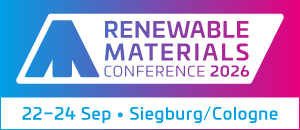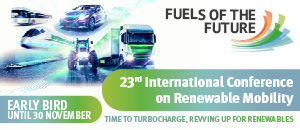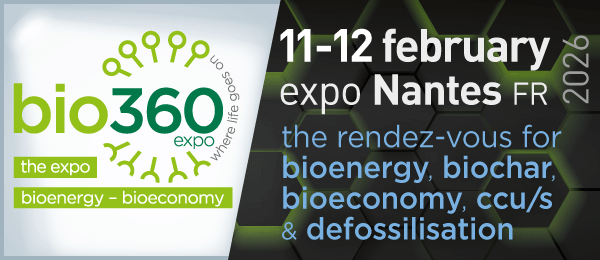
On January 4th, 2025, we made history, demonstrating the first low-cost fuel, printed from thin air, to power a vehicle. The fuel, 100% carbon neutral, was made in our Titan Forge Alpha system from CO2 captured straight from the air. The entire process was powered by solar electricity.
It marked a technological victory, no less significant than when the first efficient steam engine roared to life in the Carron Company ironworks in Scotland in 1776, or the first practical electric light bulb flickered on, on New Year’s Eve of 1879, or the first affordable car, the Ford Model T, pulled onto a Detroit road for its maiden road trip in 1908.
We’ve developed the first 21st-century fuel — a new, practical, cheap source of energy, made from CO2 salvaged from air instead of extracted from the ground. And just as steam power, electrification, and mass-manufactured motorized transport did in their respective centuries, our tech has the potential to revolutionize life as we know it.
So we celebrated, in classic Prometheus style. We filled a bike with our fuel and gave it to a stunt driver who put on a show, gifting us some wheelies and knee drags and a daring feat that earned its creator, racing driver Rollie Free, the distinction of staging one of the most famous photos in motorcycling.


Beyond the achievement, we celebrated making good on our promises. Here are a few claims we’ve made from our earliest days, all of which caused people to question whether our tech was too good to be true. All of which have since been validated by a third-party engineering firm or published in the academic literature. And all of which we are now demonstrating with our integrated commercial-scale system, Titan Forge Alpha.
Consequently, it’s also a list of things our tech can do that no one else’s can.
1. Our fuel can compete on cost with fossil fuel.
People often misunderstand this. They think we’re saying we’ve made a cheaper e-fuel among e-fuels. Which isn’t saying much, considering that the rap on e-fuels is that they cost too much to ever be practical, and thus, are forever at the mercurial mercy of government subsidies, corporate charity, and philanthropists.
Yes, ours is the lowest-cost e-fuel. Why? Because we didn’t start with the century-old, prohibitively expensive Fischer-Tropsch platform, hoping that incremental improvements and tax credits immune to political vibe shifts would someday pencil out. Instead, we chose the harder path — to innovate from first principles, developing a novel process built on modern technologies.
The result is that we’ve made a low-cost fuel, period. A new commodity — fuel made from air and renewable electricity — that can compete cent for cent with the dominant fuels in the energy market. We knew this was the benchmark we had to hit from the start. Be better. But don’t ask drivers and businesses to pay more. So that’s what we did. Our fuel is a superior product. It’s carbon neutral, and we can make it at a price that’s the same or less than gas at the pump.
2. Our fuel is made from Direct Air Capture of CO2.
We’re the only company making liquid fuels from CO2 captured straight from air. Why is DAC the gold standard as a CO2 source? Because unlike with point source CO2, you can put your fuel plant anywhere, instead of having to build next to a smokestack, whose CO2 stream you then have to scrub of contaminants. And unlike the finite feedstock of biogenic CO2, with DAC your CO2 source is limitless. So why doesn’t everyone use DAC? Because it’s expensive. Unless you’ve innovated as we have. Which brings us to point 3.
3. Our cost to capture a ton of CO2 is less than $40,
the lowest DAC cost on earth. How could this be when the previous average rate of DAC was $500 to $1000 per ton? Because our novel fuel-making process doesn’t require us to convert captured CO2 into a pure gas, which is where the expense comes in. Instead, we send it straight as CO2 dissolved in water into our Titan Forge Alpha system where it gets turned into fuel.

4. We’ve solved for the intermittency of solar and wind.
What made the Model T great was more than its power, light weight, and low cost. It was the fact that owners knew they could drive the car on a nation’s worth of roads that were notoriously unreliable, pocked with mud puddles and deep ruts. To succeed, the Model T had to absorb this punishment. So Ford and his team designed its chassis to be flexible, with a suspension and engine mount that moved with the road.
Those beautiful electrons from solar and wind, so carbon-free, present a similar challenge as did America’s roads a century ago — they’re unreliable. How does one get power when the sun doesn’t shine and the wind won’t blow? Our solution is the same as Ford’s: we’ve designed our fuel-making system to be flexible. To move, in this case, not with an uneven road, but with an unpredictable current. Our Titan Fuel Forge can power up when there’s sun and wind, and idle when there’s not. This capability is why we can make fuel, with our machines powered 100 percent by renewables. It’s also one of the reasons we don’t have to run 24/7, an advantage that sets up point 5.
5. We don’t need to be tied to the electricity grid.
Before James Watt tripled the efficiency of the steam engine, industry was forced to rely on water power. Meaning the number of factories that could be built was constrained by the finite amount of real estate lining the world’s fast-flowing rivers. Watt’s improved engine set industry free. Factories could suddenly be built anywhere, needing only the cheap, accessible power of steam and coal.
Similarly, our Titan Fuel Forge can free e-fuel production from having to hook up to the electricity grid — a costly, limited resource that is already overtaxed and underprepared for its primary function of powering populated areas. Because we’ve designed our Forge to operate solely on the cheap, accessible electrons from renewables, we can make our fuel 100% off-grid. This means we can make fuel on remote land with the highest ratings for solar irradiance and wind speed. We save money and time on project development by not needing to wait years in a queue for pricey grid hook-ups. And we’re not fighting with homes and businesses, [and data centers and crypto-miners], to carve out yet another slice from a very small electron pie.
So what does it mean when you can “print” affordable, carbon neutral fuel from the air?
We think it’s the start of a new and prosperous energy era, akin to when Edison’s light bulb transformed cities and created new economic models in the early 20th century. Or when King Coal glanced over its shoulder and saw Hydrocarbon Man standing there a few decades later.
And if you love cars, we think it means the combustion engine has a long road ahead of it, free from any stigma of releasing new CO2 to the atmosphere.
We invite you to celebrate with us by checking out our demo video below. We hope you like it as much as we enjoyed making it. Stay tuned for a post that reveals our first product.
Source
Prometheus Fuels, press release, 2025-02-12.
Supplier
Share
Renewable Carbon News – Daily Newsletter
Subscribe to our daily email newsletter – the world's leading newsletter on renewable materials and chemicals














